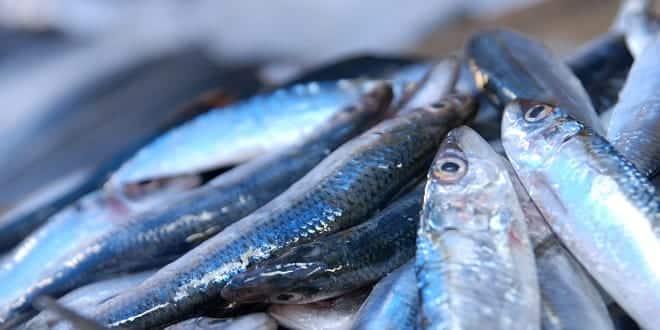Light Biscuit Factory
Food Engineering Design Light Biscuit Factory
2008/2009
IntroductIon
by
hürü bIndebir
Contents
Introduction
Process Description
Overall Mass Balance
Mixing
Drying
Cooling
Conveyors
Sanitation
Company name FLiform
Capacity F 2000kg/day
Operating time F 300 day/year
What about our liform?
More fiber
Less calorie
Minimum fat
Much more digestible
Free of sugar
Capacity : 350 kg/batch
Electric power : 17.2 kw
Cast iron main frame covered with sheet metal of 304 CrNi
Double Z- type mixing batch
Automatic hydroalic pulling down unit
Batch Cycle: 17-32 cycle per minute
Automaticly evacuated vessel in 120º evacuation angle
Energy
Theoretical electric power/batch = 17.2 kW
= 17.2 kW x (1hp/0.74570 kW)
= 23 hp/batch
8 batch/day Ü
8 batch/ day x 23 hp/ batch = 184 hp/ day
Assume efficiency ƞ = 80%
Wtheoretical= ƞ x W actual
184 hp/day= 0.80 x Wactual
Wactual= 230 hp/day
Dough is converted into a film layer by three cylinders and a conveyor band.
Thickness of dough film is adjusted by the distance of cylinders from the dough sheet
Belts are made from PVC covered cotton cloth.
Cylinders are made from stainless steel.
vWorks synchronic with the laminator
vDough film is molded into desired shape by rotating moulder
vMoulder is easily assembled and disassembled
OVEN
The wire mesh belt oven is equipped with indirect gas heating through the system.
Oven is equipped with three baking section.
Baking is controlled automatically and burners are automatically electrical ignition.
Oven operates with natural gas.
Baking time is adjustable (3-15 min).
Baking mesh belt is made from stainless steel.
coolIng
by
selma kumandaş
COOLING COOLING BAND
Baked biscuits adapt to ambient conditions (30-40 C0) before packaging
Sufficient cooling prevents softening of product
Ventilators help for cooling process
h=3.52V0.8/D0.2
D equivalent =2a*b/(a+b) FDÜ1.33 m
Assume air velocity=10m/s
h=3.52(10)0.8/(1.33)0.2
hÜ20W/m2K
Newtonian Law of Cooling:
The amount of released energy in cooling:
Q=Cp* ρ*V*(T0-T∞)*[ 1-e-(h*A/mCp)*t] QÜ2.8*104 kj
conveyors
by
Bahri yaşar urak
CONVEYOR CALCULATION
Power requirement
Theoretical power necessary to drive a belt conveyor is composed of
1.Power required to drive the empty conveyor,
2.Power required to move the load against friction of the rotating parts,
3.Power required to elevate or lower the load,
4.Additional power required from rubber skirting, scrapers etc.,
CONVEYOR CALCULATION
Motor Capacity
If, TP : the theoretical power,
Eff : driving efficiency
Level Conveyance
A. DETERMINATION OF THE TANGENTIAL FORCE FU FOR TRANSPORTATION OF UNIT LOADS ON SKID BASE
The calculation of the tangential force Fu depends on the layout of
the conveyor belt system:
1.Level
2.Ascending or
3.Descending conveyance of the goods
Fu : tangential force (N)
l t : conveying distance (mm)
cWf : centrifugal force factor
m’ : mass of material to be conveyed per meter of conveying distance (kg/m)
m’B: mass of conveyor belt per meter of conveying distance (kg/m)
b : arc of contact at the motor pulley
BELT CONVEYOR CALCULATION
Dairy capacity: 2 tons biscuits
Operation Time: 8 hours (one shift)
Conveying Mass: 2 tons / 8 hours = 0.25 tons/hour
= 0,069 kg/sec
Assume belt type S8 / 2E V03N / U0 (Smooth Surface)
Total of material to be conveying distance,m=93.75 kg
Length: 25000 mm Belt Speed: 0,1 m/s
Belt width: 1000 mm Driving efficiency: 0,60
Arc of contact motor pulley: b = 210°
BELT CONVEYOR CALCULATION
m′ =(93.75*1000)/25000=37.5kg/m
m′B = (m′′b * b 0)/1000 = ((2,1kg/m²)*1000mm)/1000
= 2.1 kg/m
m′′b : mass of conveyor (Table1)
b 0 : width of conveyor
cWf : 0,17 (from Table 2)
BELT CONVEYOR CALCULATION
FU = 10-2*lt*cWf*(m’B + m’)
FU = 10-2*25000*0,17*(2,1+37.5) = 1683 N
PA = (FU*v)/(h*103) = (1683*0,1) / (0,6*103) = 0,28 kW
Safety:
FZmax = (FU*cF1)/(100*b0) = (1683*207) / (100*1000)
= 3.48 N/mm
cF1: tension ratio factor (Table 5)
FZlim = 16 N/mm (Table 1)
Since FZlim > FZmax the selected belt type is OK.
Diameter of the motor pulley dA:
surface quality factor cm = 310 for type U0 steel pulley (Table 6)
Arc of contact factor cb = 5.8 (Table 7)
dA = (cm*FU)/(cb*b0) = (310*1683)/(5.8*1000) = 89.95 mm
SANITATION k pest management
by şelale kara
Complex System, Many Food Interests
Common pests
o Insects: flies, wasps, silverfish, ants etc
o Birds: mainly feral pigeons and sparrows
o Mites
How we can control pests?
5.3 Types of control:
o
oEnviromental controls
oPhysical controls
oChemical controls
Enviromental controls
oAccess- by design, maintenance and proofing buildings
oFood and habourage- by good house-keeping
o
Preventing access and a good
housekeeping are the most
cost-effective way of
preventing infectation
Physical control
As the pets is caught, either dead or alive and consequently is not able to die in some accessible place and the dead body will not contamine the food (e.g. catch trays)
Chemical control
oThe key is to identify the insects and then determine which is the most vulnerable stage in its life cycle
oShould be apply by specialists and immediate advice should be taken
oSafety precautions must be taken to comply with Health and Safety Legislation
THANK FOR YOUR ATTENTION
…


